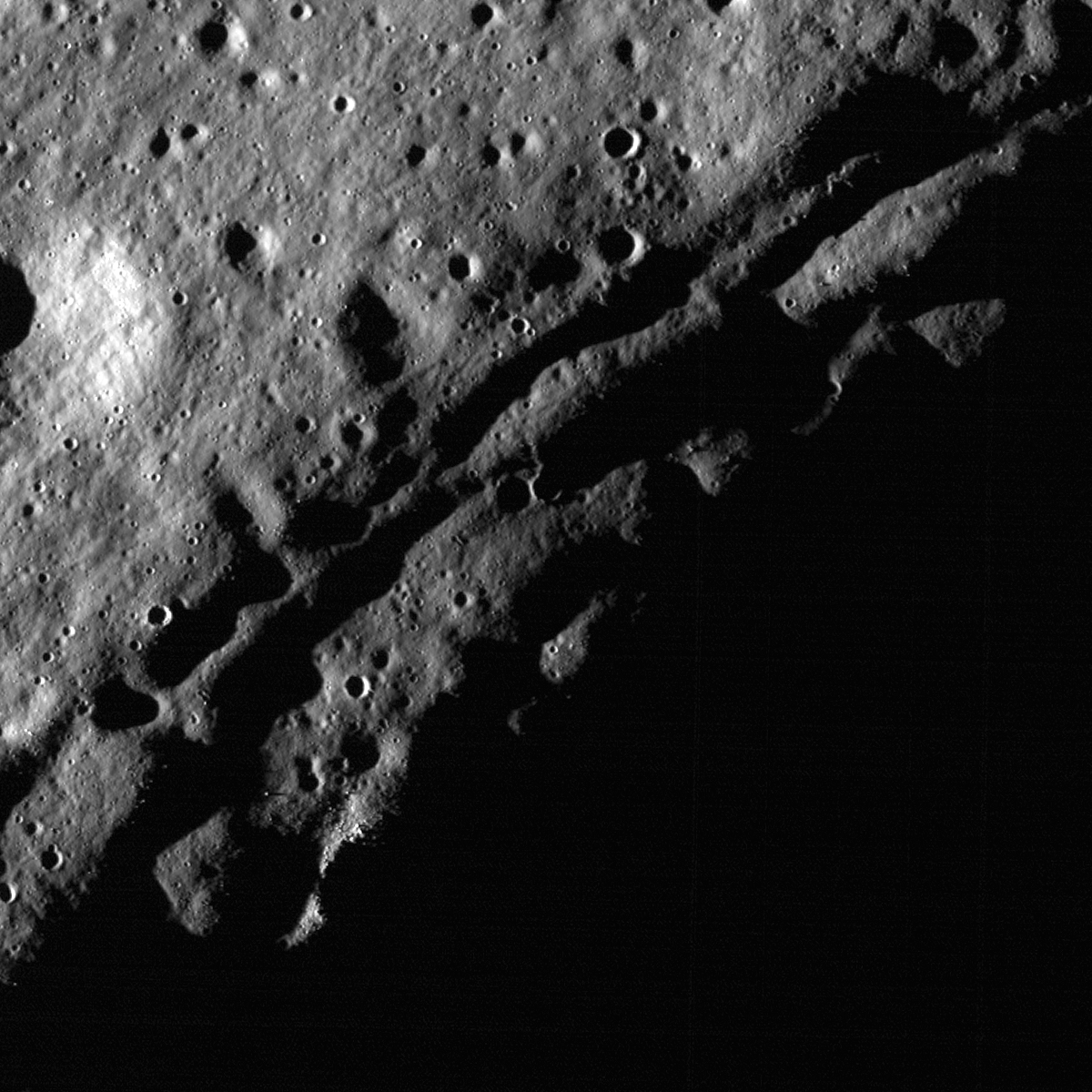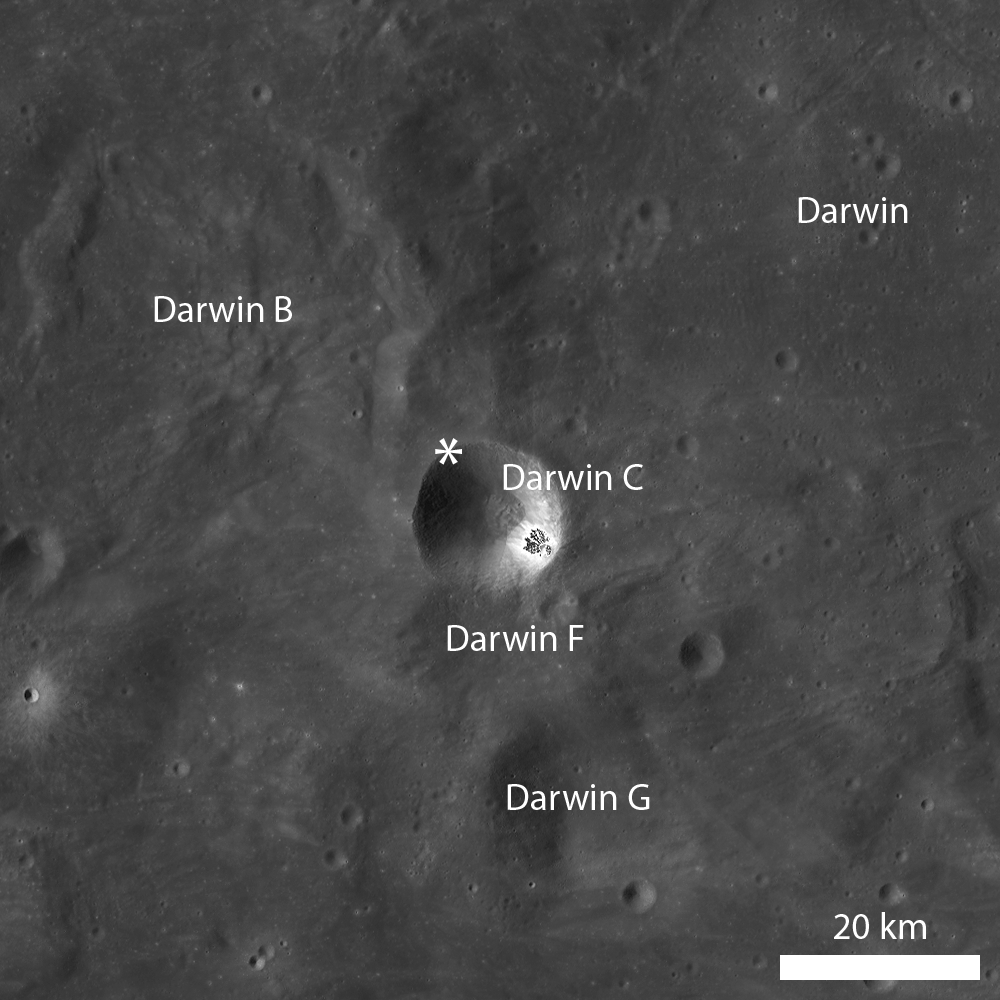
Darwin C (20.5°S, 288.9°E) is one of several satellite craters associated with the crater Darwin. Compared to its sister satellite craters, this one is less degraded. However, the rim of Darwin C provides an excellent example of post-impact modification of a crater rim. Previously, a Featured Image highlighting Klute W explored crater degradation, specifically focusing on the fracturing and slumping of the crater rim. Similar to Klute W, the rim of Darwin C has experienced slope retreat and slumping as observed in the opening image. However, based on the LROC WAC context image below, Darwin C has not experienced as much slumping as Klute W.

The slumping and downslope movement of material from a crater rim increases the size of the crater. This type of post-impact modification is important to note because scientists use crater counting to determine the relative ages of different units, since older surfaces will have more craters than younger surfaces, in addition to figuring out where the unit belongs in the lunar timescale. In crater counting, the specific diameter of the craters is very important because complex mathematical equations rely on the crater size and density (how many craters of a certain size there are in a given area) to derive a model absolute age. In addition to having more craters, older surfaces have more large craters than younger surfaces. So, if crater diameters substantially increase due to post-impact modification, the model age derived from crater counts may be anomalously old.
Explore the slumping rim of Darwin C in the full LROC NAC image!
For more information on crater counting methods and the mathematical equations used to derive model absolute ages, please download the Neukum et al. 2001 paper.
Related Posts:
Post-impact modification of Klute W
Fresh Rim of Slipher S
Farside northern highlands
Copernicus Crater and the Lunar Timescale
Published by Lillian Ostrach on 28 April 2011